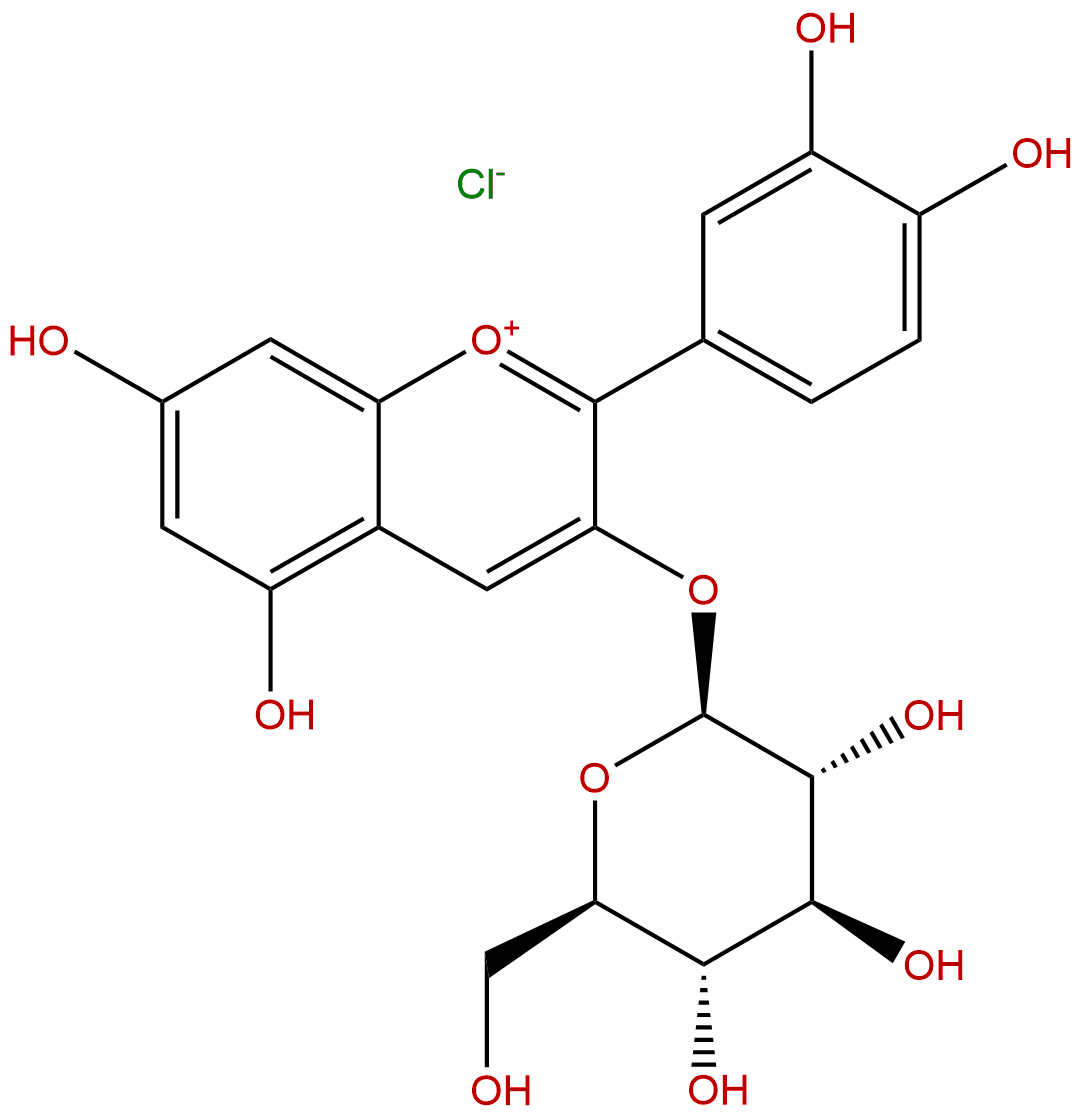
Cyanidin-3-glucoside chlorideCAS No.:7084-24-4
|
||||||||||
 |
|
|
||||||||

| Catalogue No.: | BP0430 |
| Formula: | C21H21ClO11 |
| Mol Weight: | 484.838 |
Product name: Cyanidin-3-glucoside chloride
Synonym name: Kuromanin; Chrysanthemin
Catalogue No.: BP0430
Cas No.: 7084-24-4
Formula: C21H21ClO11
Mol Weight: 484.838
Botanical Source: Found in many plants and fruits, e.g. cherries, olives, grapes, Allium spp., Cotoneaster spp. and Ilex spp. First Chrysanthemum indicum.
Physical Description: Yellow powder
Type of Compound: Anthocyanins
Purity: 95%~99%
Analysis Method: HPLC-DAD or/and HPLC-ELSD
Identification Method: Mass, NMR
Packing: Brown vial or HDPE plastic bottle
Storage: Store in a well closed container, protected from air and light. Put into refrigerate or freeze for long term storage.
Whenever possible, you should prepare and use solutions on the same day. However, if you need to make up stock solutions in advance, we recommend that you store the solution as aliquots in tightly sealed vials at -20℃. Generally, these will be useable for up to two weeks.
The product could be supplied from milligrams to grams, up to kilograms
Inquire for bulk scale.
Descriptions:
Cyanidin-3- O -glucoside, is one of the main component of mulberry anthocyanins,has protective effects from blackberry extract against peroxynitrite-induced endothelial dysfunction and vascular failure.[1]
Cyanidin-3- O -glucoside exhibits strong antioxidant activities including DPPH radical scavenging activities, ABTS radical scavenging activities and ORAC values.[2]
Cyanidin-3-O-glucoside chloride decreases mutant p21 expression, and increases the ratio of Bax/Bcl-2 and the activation of caspase-3 to induce apoptosis.[3]
References:
[1] Serraino I, Dugo L, Dugo P, et al. Life Sci, 2003, 73(9):1097-114.
[2] Chen M, Meng H, Zhao Y, et al. Bmc Complem Altern M, 2015, 15(1):1-8.
[3] Chen M, Zhao Z, Yu S. Int J Mol Sci, 2016, 17(7).
[4] Liu Z Y, Liu X Q, Bai S F, et al. Food Sci, 2011, 32(18):256-9.
HPLC of Cyanidin-3-glucoside chloride
